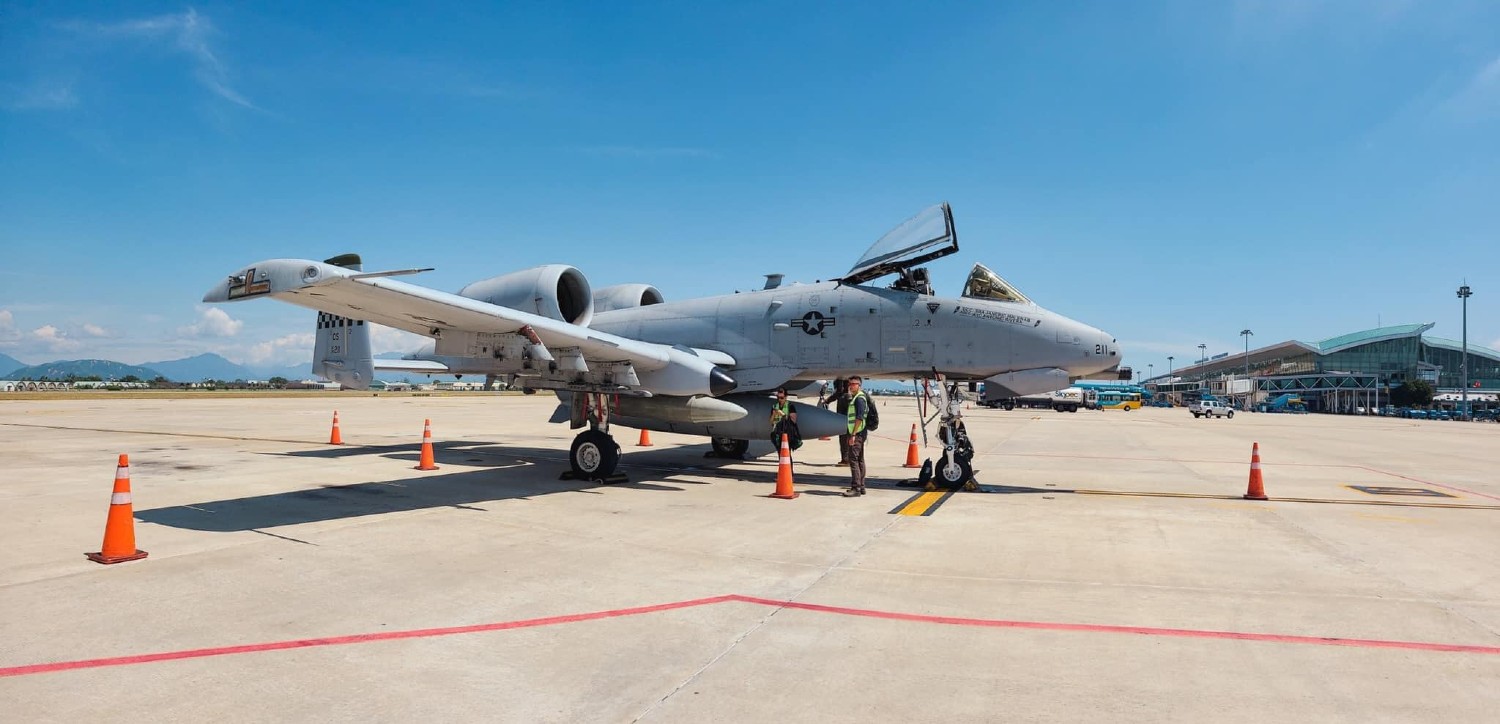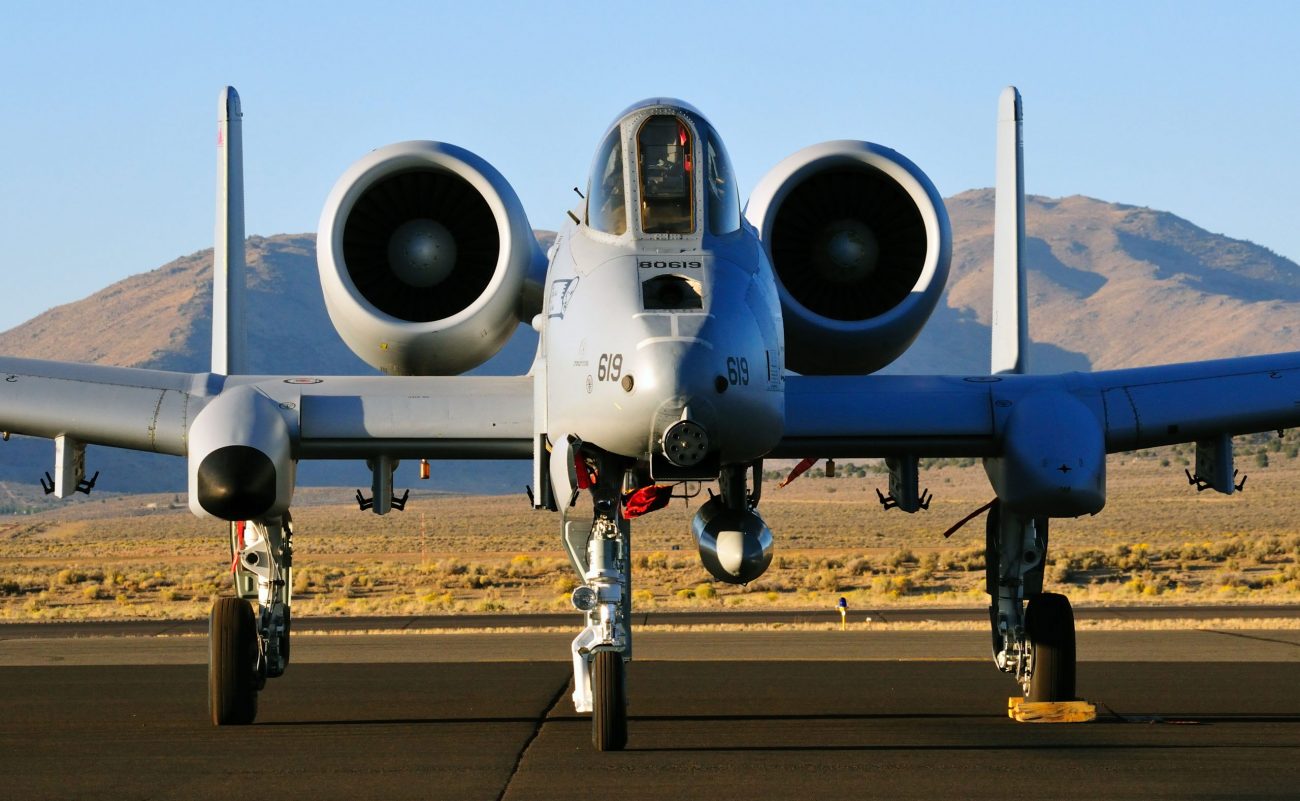‘Iconic’ U.S. Warthog Debuts In India – ‘Tank Killer’ A-10 Thunderbolt II Flies With Russia-Made Sukhoi-30 Fighters

The Indian Air Force’s largest international exercise ‘Tarang Shakti’ has entered its second phase. Debuting in the desert phase of the wargames is the iconic Fairchild Republic A-10 Thunderbolt II ‘Warthog.’ In what could be its first and last appearance, the Warthog has been flying with Russian-origin fighter jets – Sukhoi 30MKI.
Two A-10s have arrived in Jodhpur, the IAF’s premier base. Fighter jets, close air support aircraft, and tactical airlifters from Australia, the US, Greece, Sri Lanka, Singapore, and the UAE have congregated for the drills. Bangladesh has opted out of the exercise. Australia has sent three EA-18G Growler aircraft, its first combat deployment to India.
Considering the US Air Force intends to retire all A-10s over the next five or six years, the presence of the Warthogs has generated quite a buzz. In 2023, the USAF retired 21 A-10s, reducing its inventory from 281 to 260. The Air Force aims to continue this momentum, eventually phasing out all the A-10s from its inventory by 2029.
This phase will see participation from various Russian fighter jets and aircraft in the IAF fleet, such as Su-30MKIs, MiG-29 Fulcrum, and Il-78 air-to-air refuellers. India’s homegrown fighter jet, Light Combat Aircraft (LCA) Tejas, and the newest asset acquired from France, Rafales, will also take part in phase II.
AfriPrime App link: FREE to download...
https://www.amazon.com/Africircle-AfriPrime/dp/B0D2M3F2JT
The A-10, designed specifically to undertake a close air support role for American ground troops, has operated in conflict zones but has never operated alongside Russian aircraft. The video released by the IAF showcases two A-10s flying alongside a Sukhoi-30MKI.
The ‘Warthog’ has served in the USAF for 51 years. The A-10 flew for the first time on May 10, 1972, as the Vietnam War was winding down. The unusual aircraft came into being after the American F-5 Phantoms and F-111s failed to perform at low speeds in the Vietnam War. The Fairchild Republic designed an entire aircraft around a gun.
The most notable feature of A-10s is General Electric’s GAU-8 30mm rotary cannon. Mounted on its nose, the Gatling gun is one of its kind fitted on an aircraft to date. The Warthog was nearly as long as it was wide.
Its rapid bursts, seven barrels firing 65 rounds per second, have turned “an enemy soldier’s bowels to water.” The aircraft was conceived after the debacle of the US aircraft failed to provide close air support to its ground troops.
Interestingly, the A-10—the best tank buster to ever fly—will be flying in the Indian deserts, which have seen some of the biggest tank battles in the world’s military history. The battle of Longewala in 1971 saw the IAF’s British-made transonic fighter jet Hawker Hunter come to the rescue of the Indian Army’s armored troops.
A-10 – From ‘A Leprous Project Led By A Pariah’ To Becoming The Military’s Favorite Plane
The Warthog’s fuselage was little more than a massive 30mm rotary cannon with a cockpit stuck on top. It was called “a leprous project led by a pariah” (Robert Coram in the book titled ‘Boyd.’)
The A-10 specifications team interviewed every pilot who flew during the Vietnam War and forward air controller. They all prioritized long loiter time, good range, excellent visibility, low-and-slow maneuverability, survivability, and lethal weapons. Thus came the A-10 Thunderbolt II, which valued “resiliency” and “function” over all else.
For years, it was ignored as a stepchild of its F-plane playmates. The A-10 was a shotgun marriage of World War II technology, turbofan engines, and massive artillery. The pilots had expected a smaller, lighter, more maneuverable airplane than what the Warthog turned out to be. The single-seater aircraft was simple, and until post-production upgrades happened in 1989, it lacked an autopilot. It did not even have a radar.

Another thing that the pilots did not favor was its painfully slow speed. It can do just over 365 knots but usually flies strikes at 300 knots or less. The joke is that A-10s don’t have instrument panel clocks; they have calendars, and bird strikes from behind are a significant risk.
AfriPrime App link: FREE to download...
https://www.amazon.com/Africircle-AfriPrime/dp/B0D2M3F2JT
In the 1980s, when A-10 was deployed in West Germany at the peak of the Cold War, the flying branch predicted that if the A-10s went into action, seven percent of the jets would be lost per 100 sorties, translating to at least 10 A-10s being shot down every 24 hours. Contrary to the prediction, only seven Warthogs have been shot down or crashed due to combat.
It was all set to retire when it got its chance to fight against T-55, T-62, and T-72 – a fight it was designed for. The first Gulf War gave A-10s a second lease of life as they busted through tanks belonging to Saddam Hussain. Incidentally, India, too, operates T-72 at the moment.
The Warthog turned out to be the most potent armor-killer ever to fly. The A-10 was also designed around a specific weapon—the General Electric GAU-8/A seven-barrel Gatling cannon, which, with its vast 1,174-round ammunition drum (mounted behind the pilot), is as big as a car. It fires 30mm cartridges nearly a foot long.
The A-10 was designed to survive in hostile environments. The Warthog can survive direct hits from armor-piercing and high-explosive projectiles (up to 23mm).
After its success in Operation Desert Storm, the aircraft earned many monikers like ‘Warthog,’ ‘Flying Gun,’ and ‘Tankbuster.’ It was later deployed in support of NATO operations in Kosovo, Operation Enduring Freedom in Afghanistan, and Operation Iraqi Freedom.
Its high survivability made it highly popular with pilots. It is effective as it can loiter near battle areas for extended periods and operate in low ceiling and visibility conditions.
Most recently, a squadron of A-10 Thunderbolt II attack jets, specially modified to nearly triple their bomb loads, has been dispatched to the Middle East to boost US airpower in the region amid increased tensions with Iran-backed forces in Syria.

Warthog For Ukraine?
There has been clamor amongst the Ukraine sympathizers that instead of being sent to the boneyard, the A-10s should be sent to help Ukrainians against the Ukraine.
However, it seems unlikely, as Ukraine does not control the airspace above the conflict zone. This means the A-10 would be a sitting duck in contested airspace, vulnerable to air-to-air Russian fighters like the Su-35 and MiG-31.
The A-10 has been successful in past conflicts—Desert Storm 1.0, Desert Storm 2.0, and Afghanistan—but only after the US secured the airspace above the conflict zone. The A-10 is a second-phase weapon to be used once air superiority is established.
AfriPrime App link: FREE to download...
- Questions and Answers
- Opinion
- Story/Motivational/Inspiring
- Technology
- Art
- Causes
- Crafts
- Dance
- Drinks
- Film/Movie
- Fitness
- Food
- Games
- Gardening
- Health
- Home
- Literature
- Music
- Networking
- Other
- Party
- Religion
- Shopping
- Sports
- Theater
- Wellness
- News
- Culture
- War machines and policy

